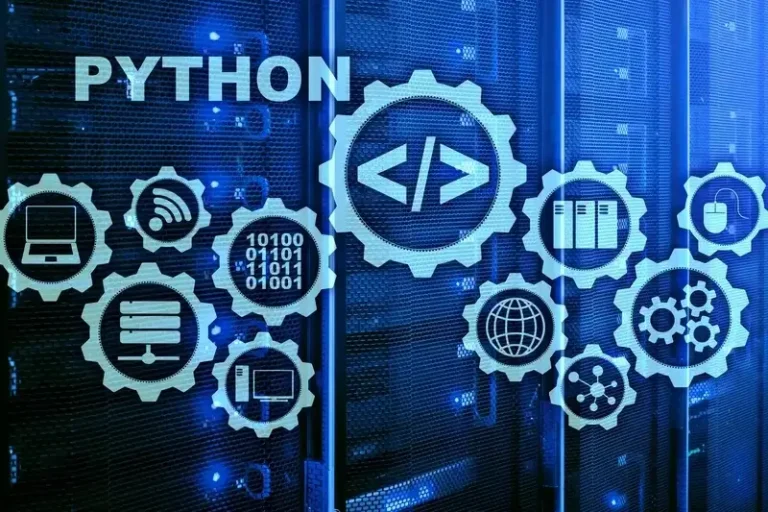These are the tools that you should use for container administration and for reducing your operational workload. Networking in a containerized setting can be advanced, especially when dealing with microservices architectures the place lots of of containers need to communicate with one another. Different container orchestrators implement automation in different Container Orchestration ways, but they all depend on a typical set of parts known as a management plane. The management aircraft supplies a mechanism to enforce policies from a central controller to each container.
The Container Orchestration Warfare

Traditional, old style software is built as one piece (i.e. the monolith model). If you, for example, have to make a very simple change to, say, the color of one of the buttons, in a single component of your software, you would want to redeploy the entire software with that change added in. In a microservices structure you cut up this monolith into smaller, extra manageable pieces. Containers usually comprise sensitive data corresponding to passwords or API keys. It is crucial to undertake secure practices for dealing with and storing this sensitive information. Techniques corresponding to secret administration techniques and encrypted container registries might help shield sensitive data and stop unauthorized entry.

Understanding Container Orchestration
The following supplies a mapping of safety threats to affected assetsand the security control goals required to mitigate them (furtherdetailed in subsequent security pattern logical designs). Source code security refers again to the apply of protecting and securing the supply code of an software from vulnerabilities, threats, and unauthorized entry. In this submit, we’ll discover out why the sensitive knowledge discovery course of is so important—along with a few of the primary challenges. We’ll see how firms sort out the daunting task of classifying their knowledge. While choosing the proper container technology for a corporation may appear difficult, it is not an impossible task. Evaluate every software, and choose the one that best meets the needs of the organization.
Safety Pattern – Container Orchestration

This effectivity reduces infrastructure costs and maximizes return on funding. Propelled by the dual engines of containerization and DevOps, container orchestration brings pace and scalability together to underwrite today’s dynamic and demanding production pipeline. Learn extra about Cisco products and solutions related to container orchestration. Container orchestration offers a technique and framework for bringing order to massive systems made up of many microservices. Container orchestration offers teams transparency into the scope and structure of container-based methods, while modularity presents the flexibility to make alterations and additions to the system.

Container orchestration platforms are essential for automating container management. Whether self-built or managed, they integrate with open-source technologies similar to Prometheus for logging, monitoring, and analytics. The creation of containers and containerization has significantly enhanced the agility of software program improvement groups, enabling environment friendly software program deployment and operation at an unprecedented scale. However, while containers provide advantages like portability and isolation, managing them individually at scale becomes cumbersome. Container orchestration includes organizing groups of containers that make up an software, managing their deployment, scaling, networking, and their availability to make sure they’re working optimally.
Built on Kubernetes, RedHat’s OpenShift offers both open-source and enterprise editions. Its adoption has grown significantly, indicating its growing reputation and use in businesses. Implementing network segmentation involves dividing the network into smaller segments or subnets and controlling visitors circulate between them. This may be successfully achieved by assigning particular community policies to completely different teams of containers primarily based on their roles and responsibilities.
Docker is built upon the idea of working system virtualization, specifically leveraging Linux kernel options like namespaces and management groups (cgroups). These features enable Docker to create isolated environments, often recognized as containers, that share the host’s kernel while offering their filesystems, network interfaces, and course of spaces. Containerization with Docker and orchestration with Kubernetes have taken the tech world by storm, revolutionizing how functions are constructed, shipped, and run. However, these powerful tools come with challenges that builders and DevOps teams must navigate to harness their potential totally.
Plus, as proven by the CI/CD pipeline example, you are not working with a single service, but many services, and every has its personal peculiarities when it comes to deployment, failure modes, monitoring, and so forth. Services, especially distributed ones, can have complicated deployment steps with a number of dependencies. If a corporation desires to be successful in adopting containerized workloads, there should be open-mindedness; groups must be prepared to merely accept shared accountability and quick feedback cycles. Select a container platform that is compliant with the server’s underlying OS. As an example, to deploy applications on Linux, contemplate Docker or Linux-VServer.
- Beyond these “dependency” examples, there’s the core app engineer business of (re)creating, scaling, and upgrading the working application (or their containers).
- Dev teams use it to quickly deploy and orchestrate purposes across a cluster of machines, automating many duties that might otherwise be time-consuming and error-prone.
- As you add extra clusters and parts, the configurations get extra intricate, due to the expanded necessities and the challenge of maintaining every thing consistent in a distributed system.
- Secure communications between the parts of your orchestration environment are essential to stop unauthorized entry and information breaches.
The extra containers a corporation has, the more time and assets it must spend managing them. You may conceivably improve 25 containers manually, but it might take a considerable period of time. Container orchestration can perform this and different important life cycle management duties in a fraction of the time and with little human intervention. Container orchestration is usually a critical a part of an organization’s method to SOAR (security orchestration, automation and response). As software program improvement has evolved from monolithic purposes, containers have become the choice for developing new functions and migrating old ones.
Thus, Kubernetes customers should either make use of a third-party software to remedy this case or thoroughly reconsider the storage of any delicate information throughout the platform. When configured correctly, functions are responsive, even underneath heavy loads and visitors spikes. Improper configuration of K8s can result in extreme scaling of an utility, leading to over-provisioning. Overprovisioning sources occurs when an enterprise fails to rigorously monitor spending and loses control over the costs concerned. In the CNCF survey, 24% of respondents did not monitor Kubernetes spending in any respect, whereas 44% relied on month-to-month estimates. Only a relative minority employed predictive Kubernetes cost monitoring processes.
The optimum plan finds the proper balance between too much and too little isolation. If containers cannot share and trade knowledge over the network, container software deployments pose a problem. Additionally, a container orchestration strategy has a major impact on the architecture used to deploy and manage containers and their environmental configurations. Container orchestration tools additionally automate how containers are deployed in clusters, as nicely as identify the best host. Once a bunch is allotted, the orchestration software manages the container throughout its life span utilizing preset necessities.
Service orchestration faces challenges as a result of the lifecycle of distributed stateful services is often more complex compared to particular person containers. A container is a lightweight, executable software that isolates the functions from the environments by which they run. It comprises the required OS libraries and dependencies, such as executables, libraries and configuration recordsdata, to run an software in any surroundings. When making scaling selections, it solely considers a pod’s useful resource requests quite than its precise utilization.
When an orchestrator is on the market, containers in an utility can all talk effectively with each other by way of the orchestrator (as against speaking with one another directly). Orchestration allows a containerized software to deal with requests efficiently by scaling up and down as needed in an automatic method. Stacy is a business-focused leader with over 20 years experience in entrepreneurial start-ups in addition to global, publicly traded firms. She’s answerable for main the monetary and administrative teams and setting the monetary strategy of the company.
Transform Your Business With AI Software Development Solutions https://www.globalcloudteam.com/